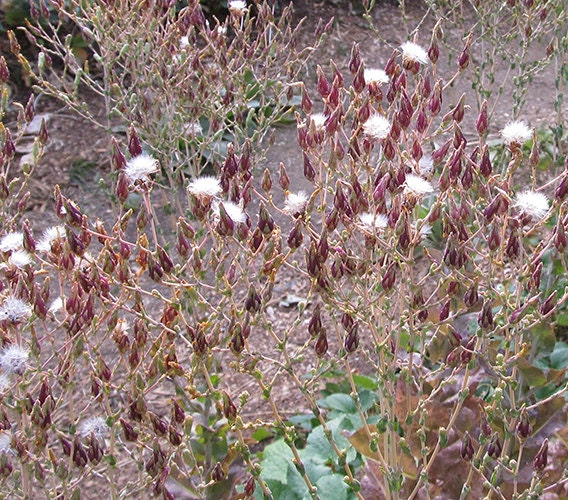If you're new to saving seed or have limited available space, consider your favorite open-pollinated lettuce. A viable lettuce seed crop can be grown in 20 square feet, and you can eat the outer leaves right up until the plants begin to send up their flower stalks.
Start by planting at least 40 seeds. Pull out any seedlings that are not totally vigorous. When the first plants bolt, pull them out too – you want to select for bolt-resistance, so be ruthless about it. A seed population can be as small as 10 plants. The four-foot-tall flowering stalks have a ragged weedy beauty, and will attract beneficial insects to the garden. Tiny solitary bees and hover flies will visit the flowers but won’t be pollinating, as lettuce flowers pollinate themselves before they open.
After blooming, the flowers close back up to ripen their seeds. When they open again they will be tiny white tufts of feathery parachute stuff attached to the hard seeds. They don’t all open at once, and they tend to stay put on the plant unless there’s a strong wind, so be patient with them and wait until a majority have opened. Then cut off the stalks near the base – or pull up the plants by the roots, a better choice if you need to harvest a bit early to avoid rain – and place them upside down in paper bags to complete drying.
By saving the last plants to go to seed, you’ll be lengthening the edible life span of next year’s crop. The next generation will also be better adapted to your growing conditions. It’s amazing and humbling how quickly vegetables adapt to our particular needs just by our attentive selection. May we find ourselves as willing to adapt to a changing world.
